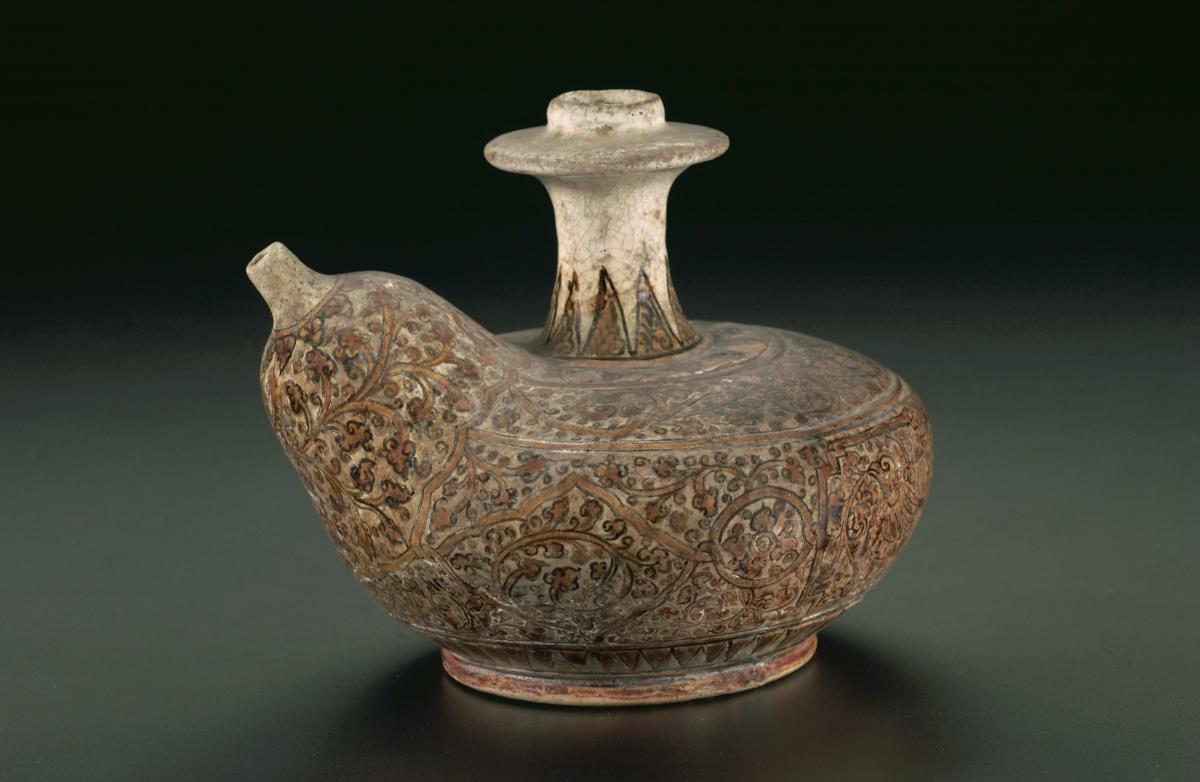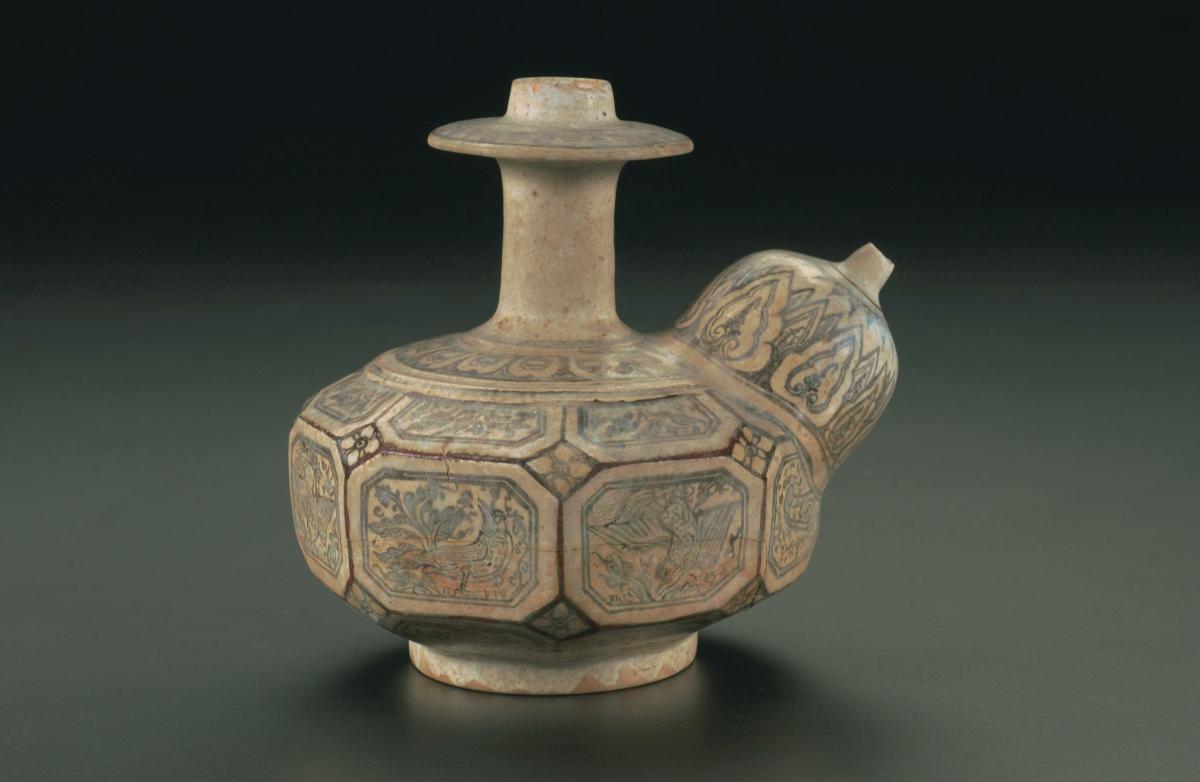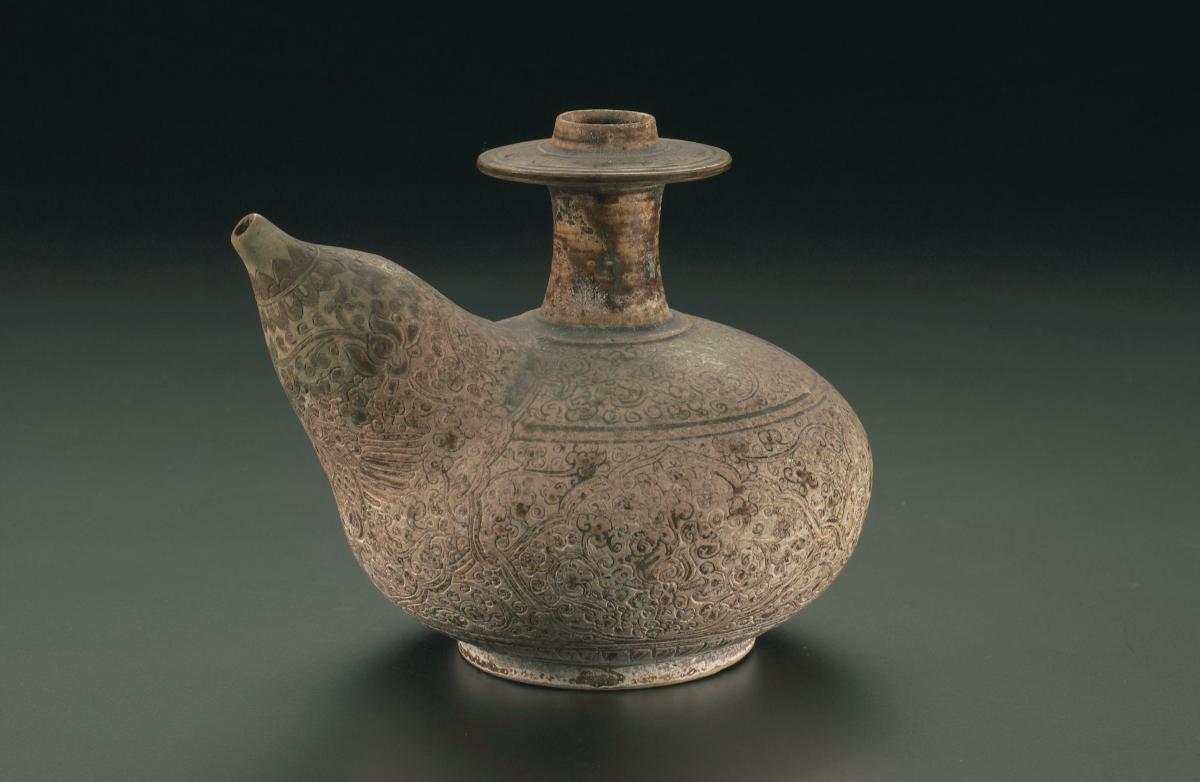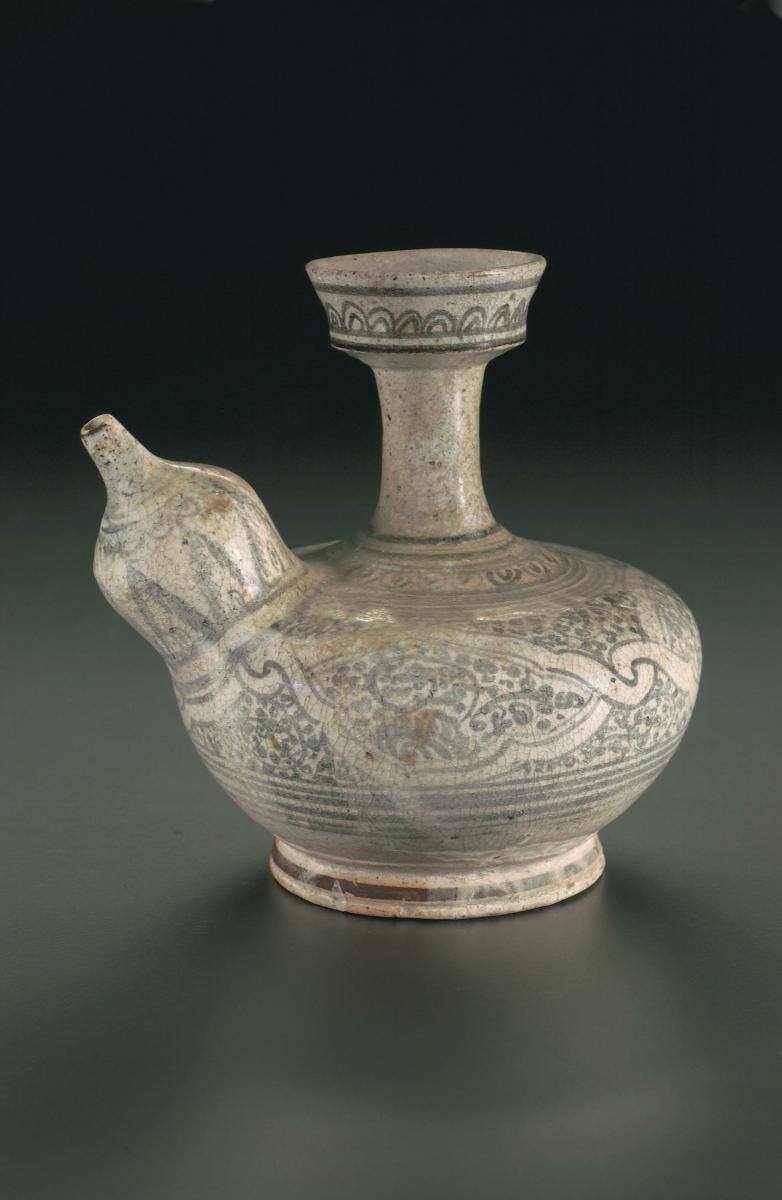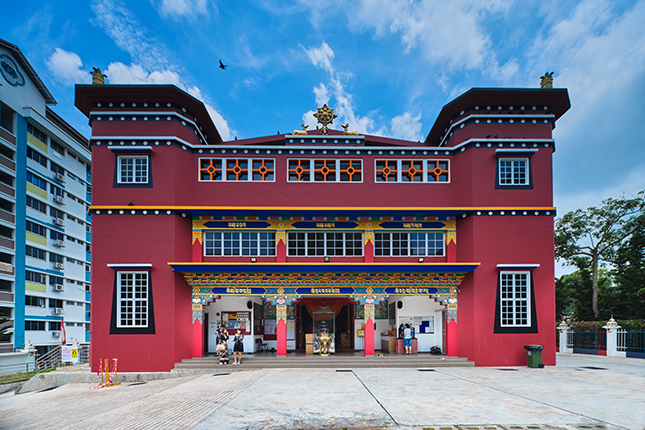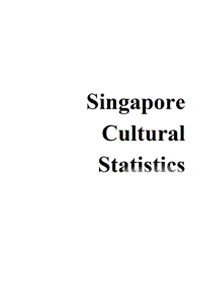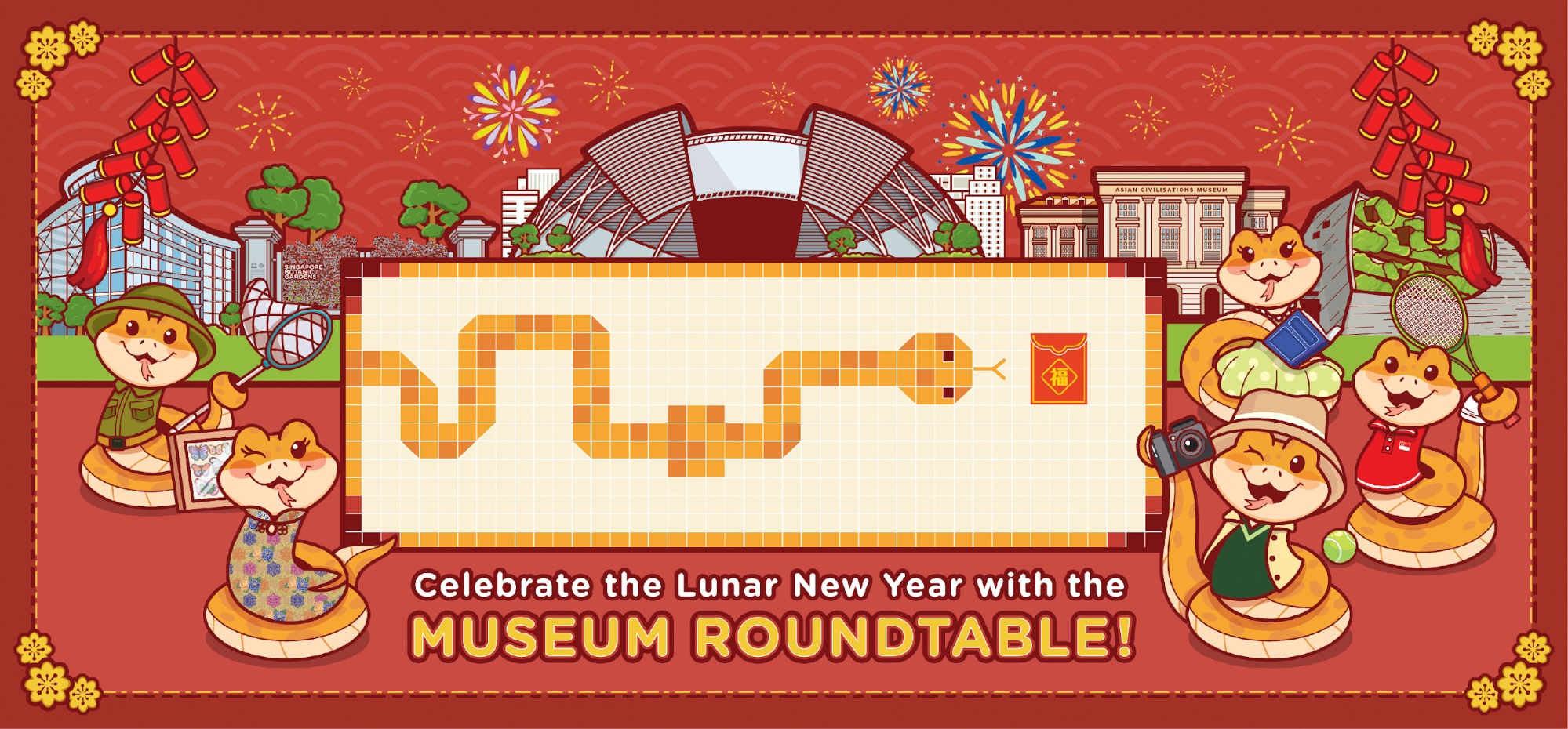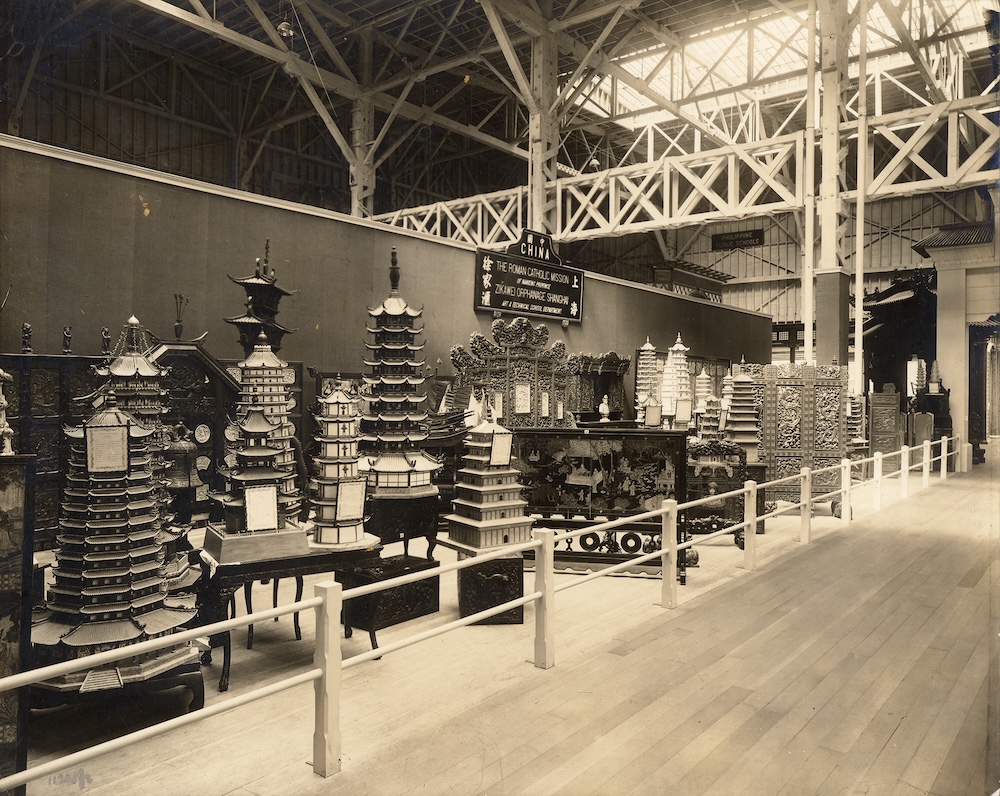This water pot also known as 'kendi' has a globular body, bulbous spout and narrow neck. It features incised decorations of birds among scrolling foliage in an iron-brown underglaze.Kendi is a Malay term derived from the Sanskrit word ‘kundika’, a small ritual pouring vessel. A typical kendi has a bulbous body, a neck which is used for holding the vessel and a spout. The tradition of using kendi in Hindu-Buddhist rituals suggests that this type of vessel originated from India. Kendi have been used in Southeast Asia for at least a thousand years, as indicated by depictions on temple wall reliefs dating back to 9th century CE. They include locally made earthenware kendi as well as glazed wares from China, Japan, Thailand and Vietnam. These were part of the lively international trade in ceramics and other commodities that resulted in stylistic exchanges. Kendi were used for a wide range of purposes in addition to their primary function as a pouring and drinking container. In Southeast Asia, kendi were important as ritual pouring vessels used in weddings and other ceremonies. Miniature kendi were likely to have been medicine containers or toys. The West Asian tradition of tobacco smoking using water-pipes was also practiced in this region and kendi were adapted for this purpose.




